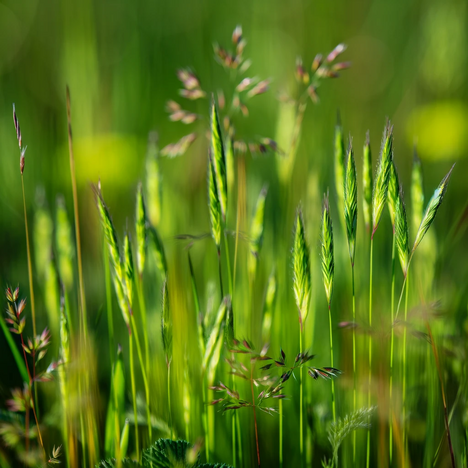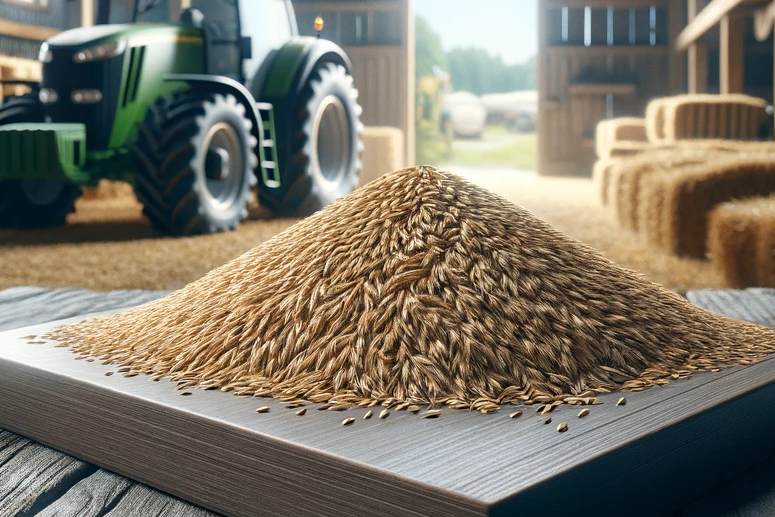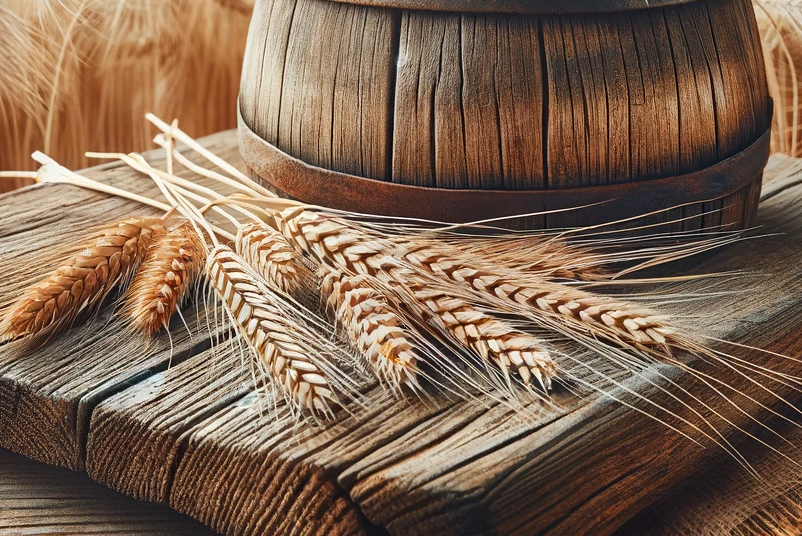Spelt hulls

Spelt hulls may not be the first thing you think of when it comes to your dog's diet. But this natural by-product of spelt processing holds potential benefits that are worth exploring. In this article, we'll dive deep into the world of spelt hulls to understand what they are, highlighting both their benefits and potential drawbacks for your dog's health.
What are spelt hulls?
Spelt hulls are the outer husk of the spelt grain, which is removed during the threshing process. In contrast to the inner, nutrient-rich kernel of the grain, which is processed into flour, the husks are harder and more fibrous. They are often used as filling material for organic pillows and mattresses, but their role in animal nutrition is gaining increasing interest.
The benefits: Why spelt hulls can be good for your dog
Natural source of fiber
Spelt hulls are rich in fiber, which promotes healthy digestion. They can help reduce the risk of digestive problems such as constipation and support healthy gut flora. Good digestion is essential for the absorption of nutrients and your dog's general well-being.
Support with weight management
Due to their high fiber content, spelt hulls can provide a feeling of satiety without being high in calories. They are an excellent ingredient for food mixes aimed at weight management by helping to satisfy your dog's hunger between meals.
Environmentally friendly option
The use of spelt hulls in dog food helps reduce waste from grain processing. By using by-products such as husks as feed, we promote more sustainable and environmentally conscious farming.
Possible disadvantages and considerations
Allergic reactions
Although spelt is considered less allergenic than other grains, some dogs may be sensitive to spelt hulls. Watch your dog carefully when changing their diet and consult a vet if you have any concerns.
Limited nutritional content
While spelt hulls are an excellent source of fiber, they offer little in the way of other nutrients compared to the inner grain. It's important that your dog's diet remains balanced and contains all the necessary vitamins and minerals.
Spelt hulls offer interesting benefits for your dog's diet, especially in terms of digestive health and weight management. They also represent a more environmentally friendly ingredient in your four-legged friend's diet. However, it's crucial to keep an eye on the overall diet and ensure your dog is getting a balanced diet rich in all the necessary nutrients. As with any change in your dog's diet, it is advisable to proceed gradually and monitor your dog's reaction carefully.
If you notice any signs of hypersensitivity or poisoning in your dog, you should see your vet immediately. We are not a substitute for a vet, but we try to be as accurate as possible. Every dog reacts differently and we recommend you get a second opinion or consult your vet if in doubt.
Stay healthy and take good care of your four-legged friend!😊
Similar to Spelt hulls
Wheat hulls are the hard outer layers of the wheat kernel that are separated when wheat is processed into flour. Although they are often considered a by-product of flour production, wheat hulls...
Oat hulling bran consists of the outer layers of the oat grain, which are separated in the hulling mill. This includes the aleurone layer, the seed coat and the pericarp as well as a small...
Barley bran is the outer layer material of the barley grain that is separated during the milling process. Rich in fiber, vitamins and minerals, barley bran is a valuable by-product that is used not...
Rye hulls are the outer layers of the rye grain that are removed during flour production. Rich in fiber, minerals and antioxidants, they are considered a valuable by-product in the human diet. But...



